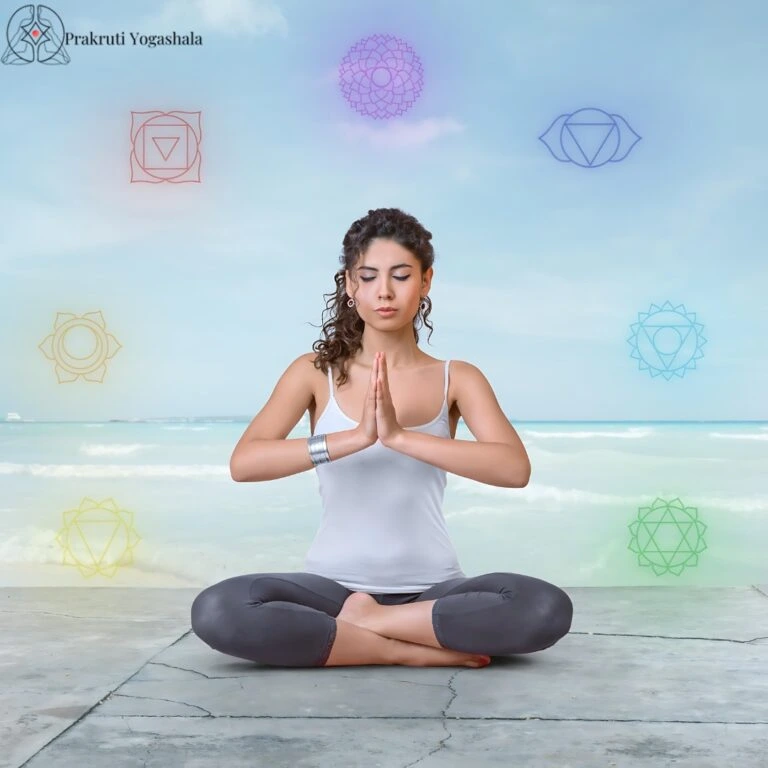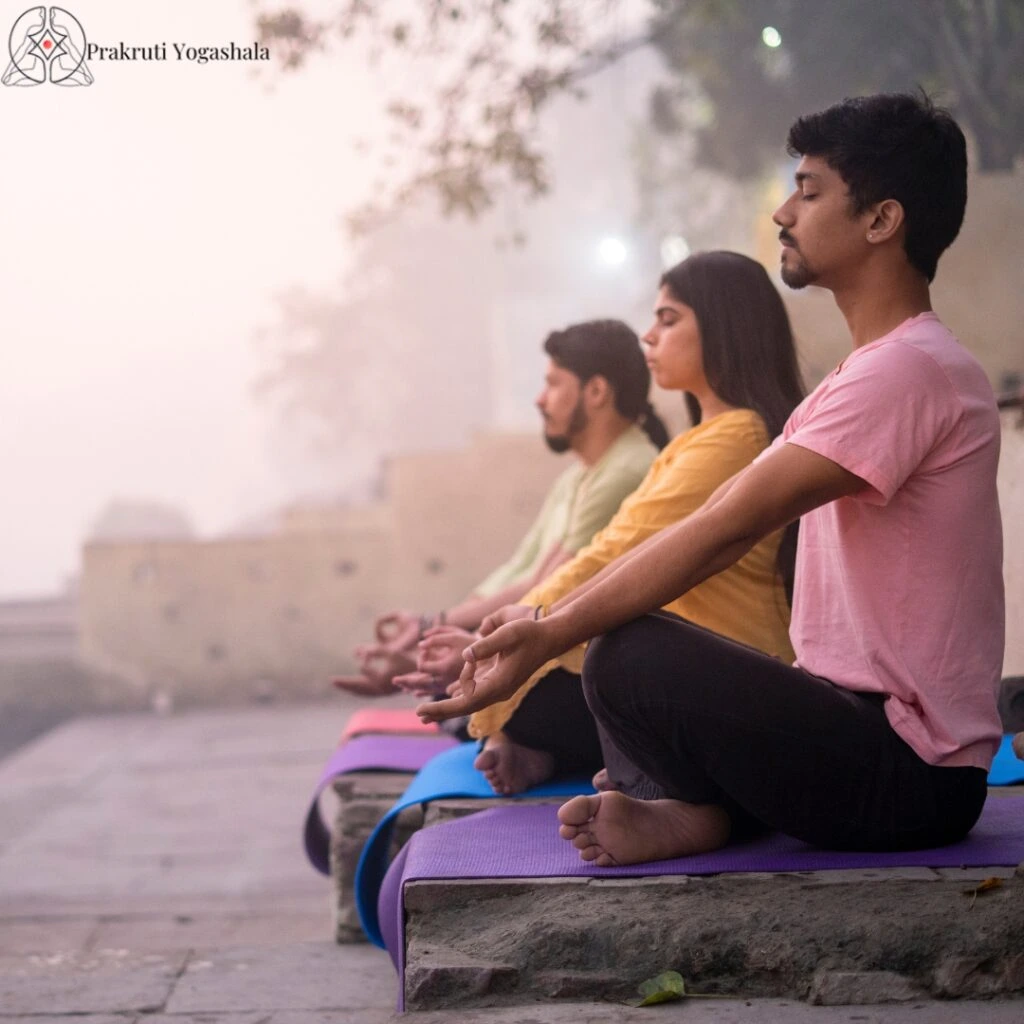The concept of chakras plays a pivotal role in various Eastern spiritual traditions, notably within the practice of yoga. Rooted in ancient Hindu and Buddhist texts, chakras are described as the energy centers of the body that influence physical, emotional, and spiritual well-being. This article delves into what chakras are in yoga, identifies the seven main chakras, and explores how mudras and mantras can help activate these energy centers, enhancing overall well-being.
What are Chakras in Yoga?
Chakras are often depicted as spinning wheels of energy located along the spine, from the base up to the crown of the head. Each chakra corresponds to specific nerve bundles and major organs. The optimal function of chakras ensures that energy flows smoothly throughout the body, leading to a balanced and healthy state. When any of these chakras are blocked or unbalanced, it can lead to physical, mental, or emotional disturbances.
The Seven Chakras in Yoga
Understanding the seven chakras is essential for anyone practicing yoga, particularly those interested in deepening their spiritual practice or enhancing physical and emotional balance. Here’s a brief overview of each:

1. Root Chakra (Muladhara):
The Root Chakra, located at the base of the spine, represents our foundation and sense of stability. It governs our basic needs for survival, security, and safety. When balanced, the Muladhara enhances feelings of groundedness and tranquility. Physical activities and practices that strengthen the legs and feet can stimulate this chakra, helping to alleviate fears and promote a sense of security.
2. Sacral Chakra (Svadhishthana):
Situated just below the navel, the Sacral Chakra is associated with pleasure, creativity, and emotional body. It influences our ability to enjoy life’s pleasures without guilt. A balanced Svadhishthana promotes healthy relationships, creativity, and adaptability. Yoga poses that involve hip openers can assist in unlocking this chakra’s energy, fostering both creativity and emotional well-being.
3. Solar Plexus Chakra (Manipura):
The Solar Plexus Chakra, located in the abdomen, is the center of self-esteem, willpower, self-discipline, and personality. A strong and balanced Manipura enhances one’s ability to achieve goals, feel self-confident, and be assertive. Practices that focus on core strength and heat-building can activate this chakra, aiding in the cultivation of inner strength and personal power.
4. Heart Chakra (Anahata):
The Heart Chakra is at the center of our chest and influences our ability to love and be compassionate. It’s the bridge between our lower and upper chakras, balancing earthly and spiritual aspirations. Open Anahata fosters unconditional love, empathy, and healing. Heart-opening yoga poses can help to clear blockages in this chakra, leading to a more compassionate and loving demeanor.
5. Throat Chakra (Vishuddha):
Located in the throat, this chakra governs communication, expression, and truth. A balanced Vishuddha enables individuals to express their truth with clarity and integrity. Singing, chanting, and practicing neck stretches can help to enhance the function of this chakra, facilitating better communication in everyday life.
6. Third Eye Chakra (Ajna):
This chakra, positioned between the eyebrows, is the center of intuition and foresight. When the Ajna is balanced, it allows for clear thought, self-reflection, and perception beyond ordinary sight. Meditation and visualization exercises can stimulate this chakra, enhancing intuition and enabling a deeper spiritual connection to the universe.
7. Crown Chakra (Sahasrara):
The Crown Chakra, located at the top of the head, is the gateway to higher states of consciousness. It connects us to the divine and the universal. A well-balanced Sahasrara brings spiritual insight and a sense of peace and oneness with the world. Meditation and mindfulness practices that promote silence and connection can activate this highest chakra, fostering a deeper sense of spiritual growth and enlightenment.
Mudras and Mantras for Yoga Chakras
Mudras (hand gestures) and mantras (spoken chants) are tools used in yoga to enhance the flow of energy through the chakras. Each chakra has specific mudras and mantras that can stimulate energy flow, aiding in the removal of blockages and promoting health. For instance:

-
- Root Chakra: The mudra for grounding is Ganesha Mudra, and the mantra is “Lam.”
-
- Sacral Chakra: For creativity, use Shakti Mudra with the mantra “Vam.”
-
- Solar Plexus Chakra: The Rudra Mudra and mantra “Ram” help enhance personal power.
-
- Heart Chakra: To open the heart, practice Anjali Mudra with the mantra “Yam.”
-
- Throat Chakra: Vishuddha Mudra and the mantra “Ham” encourage clear communication.
-
- Third Eye Chakra: Hakini Mudra and the mantra “ksham” foster intuition.
- Crown Chakra: For spiritual connection, use the Thousand-Petal Lotus Mudra with the mantra “ silence”
Table: Chakras, Associated Mudras, and Mantras
| Chakra | Mudra | Mantra |
| Root (Muladhara) | Ganesha Mudra | Lam |
| Sacral (Svadhishthana) | Dhyani Mudra | Vam |
| Solar Plexus (Manipura) | Rudra Mudra | Ram |
| Heart (Anahata) | Anahata Mudra | Yam |
| Throat (Vishuddha) | Vishuddha Mudra | Ham |
| Third Eye (Ajna) | Hakini Mudra | ksham |
| Crown (Sahasrara) | Sahasrara Mudra | Silence |
Integrating Chakras in Daily Yoga Practice
To incorporate chakra work into your yoga practice, start by focusing on poses that activate each specific chakra. For example, a tree pose for the Root Chakra or a fish pose for the Throat Chakra. Integrating meditation and yoga, especially in serene places like Rishikesh, can significantly enhance this experience. If you’re seeking deeper engagement, consider participating in yoga teacher training in Rishikesh, where the spiritual environment complements chakra studies beautifully.
Conclusion
Chakras in yoga offer a fascinating lens through which to view your yoga practice and personal health. By understanding and working with these energy centers, you can achieve a greater balance of mind, body, and spirit. Whether you are a beginner or deepening your practice through yoga teacher training, knowledge of the chakras enriches the journey toward inner harmony and wellness.
In understanding chakras, you not only benefit from a balanced body and mind but also pave the way for profound spiritual awakenings. This foundational knowledge helps yogis at all levels connect more deeply with their practice and themselves.